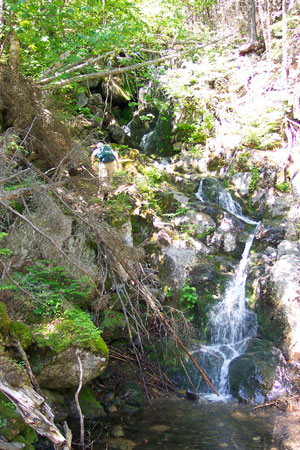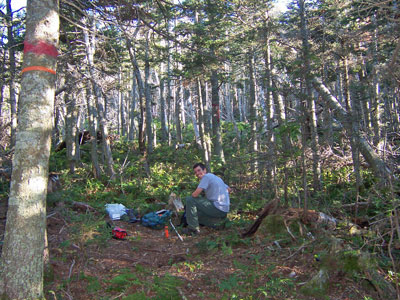DACF Home → Bureaus & Programs → Maine Natural Areas Program → Ecological Reserves → Mt. Abraham
(Printer Friendly Version-65 KB pdf) (Download a free copy of Adobe Acrobat Reader)
Mt. Abraham
Mt. Abram Twp., Salem Twp.

Vital Statistics
- Size: 4,033 acres
- Regulated: N/A
- Non-Regulated: N/A
- Upland: 4,033 acres
- Forested Wetland (NWI): 0 acres
- Non-Forested Wetland: 0 acres
- Open Water: 0 acres
- Roads: trails-~4 miles
- Biophysical Mahoosucs/Rangeley Lakes
- BPL Region: West

(Download a Printer Friendly Version-582 KB pdf-of this map.)
Exemplary Natural Communities
Rare Plants
| Scientific Name | Common Name | State Rank | Global Rank | State Status |
|---|---|---|---|---|
| Vaccinium boreale | Alpine Blueberry | S2 | G4 | SC |
| Huperzia selago | Alpine Clubmoss | S2 | G5 | T |
| Carex bigelowii | Bigelow's Sedge | S2 | G5 | SC |
| Betula minor | Dwarf White Birch | S1 | G3G4Q | E |
| Epilobium hornemannii | Hornemann's Willow-herb | S1 | G5 | E |
| Diapensia lapponica | Lapland Diapensia | S2 | G5 | SC |
| Geocaulon lividum | Northern comandra | S2 | G5 | SC |

Rare Animals
There are no documented occurrences of rare animals within this Ecoreserve. For more information on rare animals in Maine, visit the Maine Department of Inland Fisheries and Wildlife.
Description
The mountain's summit forms an extensive treeless ridge dominated by characteristic alpine vegetation. In fact, Mt. Abraham supports some of Maine's largest alpine habitat outside of Mt. Katahdin. Three different types of alpine communities are present, and together these rare communities provide habitat for six rare plant species. One vegetation type in particular - diapensia alpine ridge -- occurs at only two other locations in Maine.

Lower slopes of the mountain contain mature hardwood and spruce forests with little to no signs of past harvesting. Some old growth spruce stands sampled in 1997 support trees over three hundred years old. Other noteworthy natural communities include fire-dependant, open canopy spruce woodlands and birch woodlands.
A fire warden's trail ascends from the southeast, and a spur trail extends southeast from the Appalachian Trail.
Resources
- Cogbill, Charles V. 1998. An Ecological Assessment of Lands of Mead and SAPPI Corps. on Mounts Abraham and Saddleback, Maine. Appalachian Trail Conference final report.

